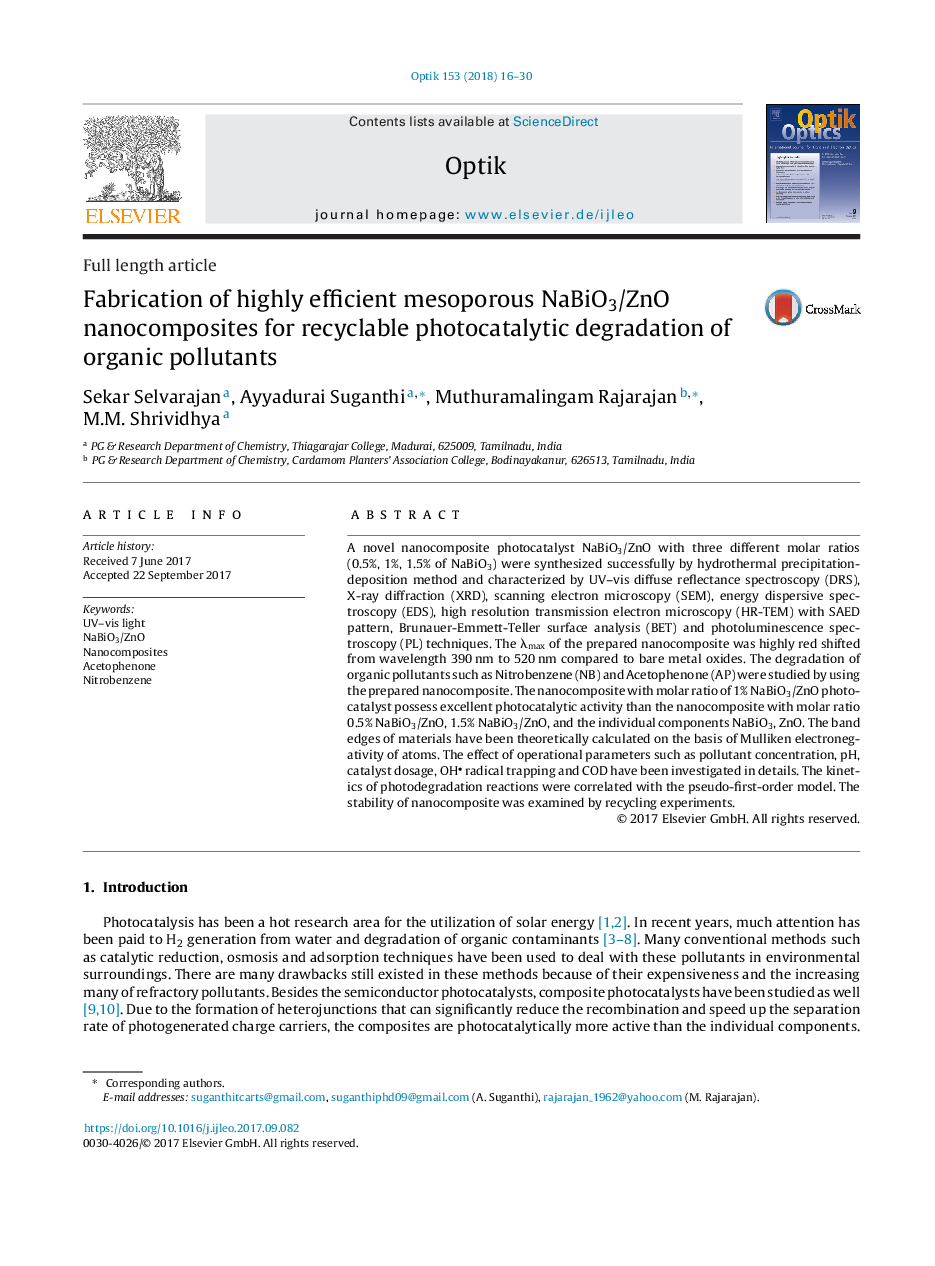| Article ID | Journal | Published Year | Pages | File Type |
|---|---|---|---|---|
| 5024880 | Optik - International Journal for Light and Electron Optics | 2018 | 15 Pages |
Abstract
A novel nanocomposite photocatalyst NaBiO3/ZnO with three different molar ratios (0.5%, 1%, 1.5% of NaBiO3) were synthesized successfully by hydrothermal precipitation-deposition method and characterized by UV-vis diffuse reflectance spectroscopy (DRS), X-ray diffraction (XRD), scanning electron microscopy (SEM), energy dispersive spectroscopy (EDS), high resolution transmission electron microscopy (HR-TEM) with SAED pattern, Brunauer-Emmett-Teller surface analysis (BET) and photoluminescence spectroscopy (PL) techniques. The λmax of the prepared nanocomposite was highly red shifted from wavelength 390 nm to 520 nm compared to bare metal oxides. The degradation of organic pollutants such as Nitrobenzene (NB) and Acetophenone (AP) were studied by using the prepared nanocomposite. The nanocomposite with molar ratio of 1% NaBiO3/ZnO photocatalyst possess excellent photocatalytic activity than the nanocomposite with molar ratio 0.5% NaBiO3/ZnO, 1.5% NaBiO3/ZnO, and the individual components NaBiO3, ZnO. The band edges of materials have been theoretically calculated on the basis of Mulliken electronegativity of atoms. The effect of operational parameters such as pollutant concentration, pH, catalyst dosage, OHâradical trapping and COD have been investigated in details. The kinetics of photodegradation reactions were correlated with the pseudo-first-order model. The stability of nanocomposite was examined by recycling experiments.
Related Topics
Physical Sciences and Engineering
Engineering
Engineering (General)
Authors
Sekar Selvarajan, Ayyadurai Suganthi, Muthuramalingam Rajarajan, M.M. Shrividhya,
